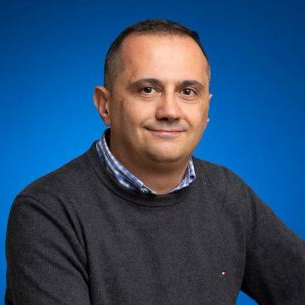IoT Systems for Energy Applications
A special issue of Energies (ISSN 1996-1073). This special issue belongs to the section "F5: Artificial Intelligence and Smart Energy".
Deadline for manuscript submissions: closed (30 September 2021) | Viewed by 18882
Special Issue Editors
Interests: electric vehicles; intelligent transportation systems; edge computing; Internet of Things; cyber–physical systems; human–computer interaction; serious games; deep learning, machine learning; object detection; trajectory prediction; reinforcement learning; datasets
Special Issues, Collections and Topics in MDPI journals
Interests: applications of electronic systems; technology-enhanced learning; internet of things; games; electric vehicles charging
Special Issues, Collections and Topics in MDPI journals
Special Issue Information
Dear colleagues,
Bringing ever more intelligence to the operational fields, Internet-of-Things (IoT) systems promise to significantly improve the processes of energy generation, distribution, and utilization.
IoT supports real-time monitoring, situational awareness and intelligence, control, and cyber security, which can make the energy eco-system more effective, efficient, secure, reliable, resilient. Insights from data collected from field devices could be used to develop new services, improve real-time decision-making, solve critical problems, reduce wastage, early detect maintenace issues, enhance energy access also by poorer people.
Achieving these targets requires developing complex hardware/software systems, spanning from the edge to the cloud, in a variety of application domains and dealing with issues such as scalability, interoperability, safety, security, consumption, pollution.
The goal of this Special Issue is to present and discuss IoT-based solutions that advance the technological state of the art of energy-related applications.
Prof. Dr. Francesco Bellotti
Prof. Dr. Riccardo Berta
Guest Editors
Manuscript Submission Information
Manuscripts should be submitted online at www.mdpi.com by registering and logging in to this website. Once you are registered, click here to go to the submission form. Manuscripts can be submitted until the deadline. All submissions that pass pre-check are peer-reviewed. Accepted papers will be published continuously in the journal (as soon as accepted) and will be listed together on the special issue website. Research articles, review articles as well as short communications are invited. For planned papers, a title and short abstract (about 100 words) can be sent to the Editorial Office for announcement on this website.
Submitted manuscripts should not have been published previously, nor be under consideration for publication elsewhere (except conference proceedings papers). All manuscripts are thoroughly refereed through a single-blind peer-review process. A guide for authors and other relevant information for submission of manuscripts is available on the Instructions for Authors page. Energies is an international peer-reviewed open access semimonthly journal published by MDPI.
Please visit the Instructions for Authors page before submitting a manuscript. The Article Processing Charge (APC) for publication in this open access journal is 2600 CHF (Swiss Francs). Submitted papers should be well formatted and use good English. Authors may use MDPI's English editing service prior to publication or during author revisions.
Keywords
- internet of things
- edge computing
- cloud computing
- embedded systems and applications
- cyber-physical systems
- energy distribution
- energy harvesting
- smart grid






